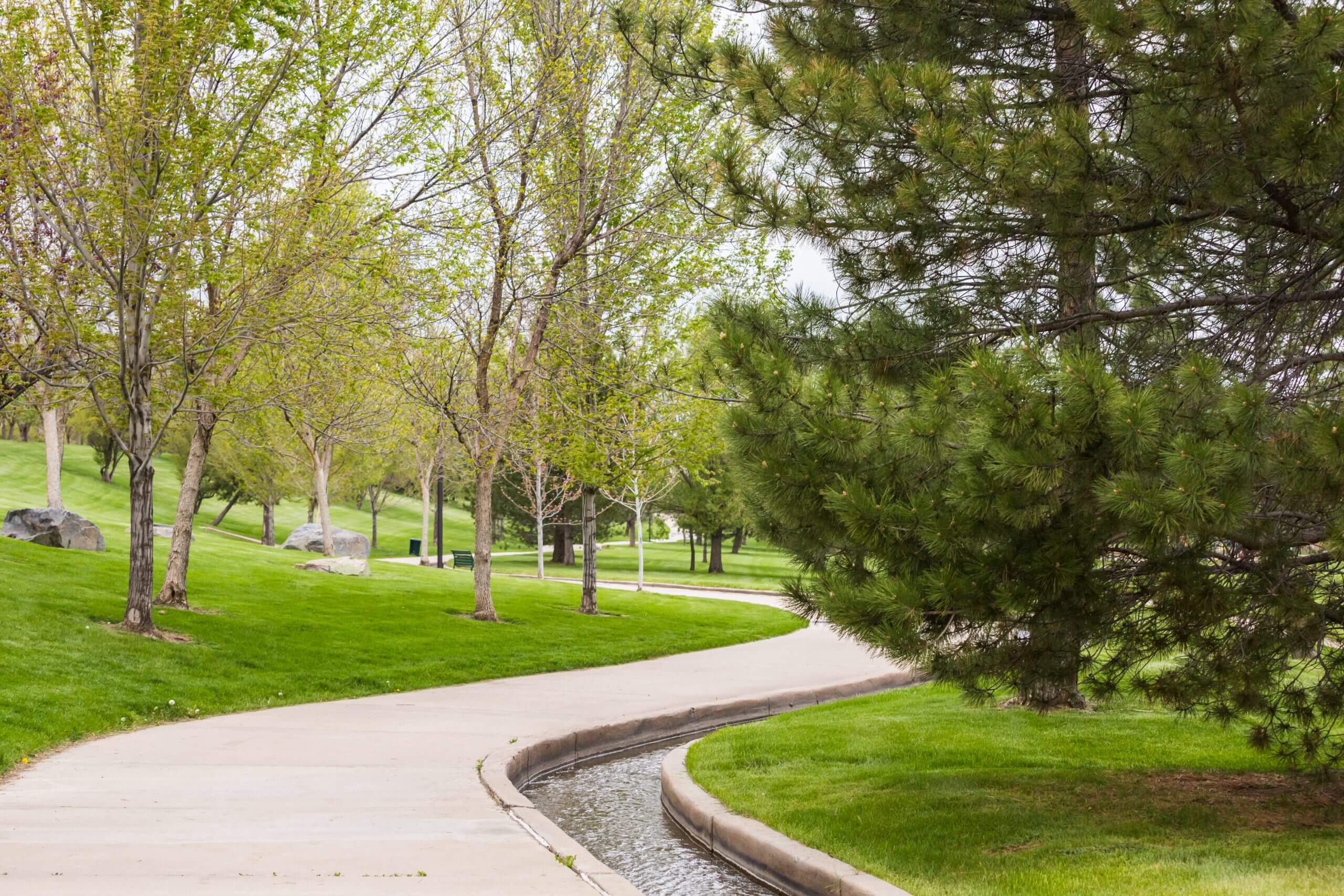
Experts say that the best time to plant a tree is in the spring or the fall – in other words, during seasons that are generally void of extreme temperatures, and before a tree will go dormant during the winter.
And, while generally speaking, the process of planting a tree isn’t particularly difficult, trees bring so many benefits to the people and the ecosystem surrounding them. To name just a few benefits: they provide shade on hot summer days, they keep our air and water cleaner, and they reduce stormwater run-off.
The time it takes for trees to reach full maturity depends on the type of trees you have as part of your landscape. (And in Colorado, the most popular trees are bristlecone pine, Colorado blue spruce, Douglas-fir, Engelmann spruce, limber pine, lodgepole pine, narrowleaf cottonwood, quaking aspen, piñon pine, plains cottonwood, ponderosa pine, Rocky Mountain juniper, subalpine fir and white fir).
Some of these trees take up to ten years to reach their peak, but you will of course see progress regularly if you take care of them properly. And, even though tree dormancy occurs in the winter, this doesn’t stop the upkeep if you want a healthy, happy tree come spring again.
When, baby, it’s cold outside
While trees of any age require year-round care, newly planted trees require extra attention during their first winter.
Why, exactly?
In their first few years, trees don’t have strong, mature root systems that more established ones do.
So, just like a growing toddler whose immune system is developing and in need of nurturing, a young tree requires the same type of care and attention in its first few years of growth.
While different trees will require different frequencies and amount of hydration, watering should not stop during the winter (despite how unpleasantly cold it gets outside). Its branches may not be laden with greenery, but its roots still need that water to sustain the winter and prepare itself for further growth when warmer weather hits.
Winter care guide
Generally speaking, once a tree is planted, it should be watered every three to five days. When winter hits, you should limit the watering to twice a month. If possible, plan for this bi-monthly watering on warmer days – ideally when temperatures are above 40 degrees Fahrenheit and when there is no snow cover. Noon is the best time to water, too, since it is usually the warmest time of the day (and eliminates the chances of roots freezing).
Proper and diligent winter watering will prevent your trees from suffering from winter burn, which affects trees like evergreens, firs, pine trees, and junipers. Trees are also vulnerable to this condition when they are planted in unprotected, open locations and are thus exposed to severe winter conditions. So, if possible, plant your trees where there is cover.
Or, you can wrap trees with materials like burlap (which will protect them from fluctuating temperatures that include intermittent intense sun, snow, and wind during winter months). This is especially beneficial for young maple trees.
Signs of winter burn are browning leaves, and in the most severe of cases, young trees will die. So, if your young trees (those in the first three years of their lives) are susceptible to extreme weather in the winter, wrapping their barks can allow the bark to thicken and prevent frost cracks.
Young Winter Tree Care Breakdown
In summary, if you have a young tree in your yard, here are a few steps to guarantee protection:
- Add a 3-4” layer of mulch 6” away from the tree’s trunk can help conserve soil moisture.
- Wrap young trees to protect them from damage caused by animals such as deer and rabbits.
- Do not fertilize or prune trees during the first year of establishment.
Contact us today to learn more, or to pursue any of our expertise when it comes to winter tree care.
